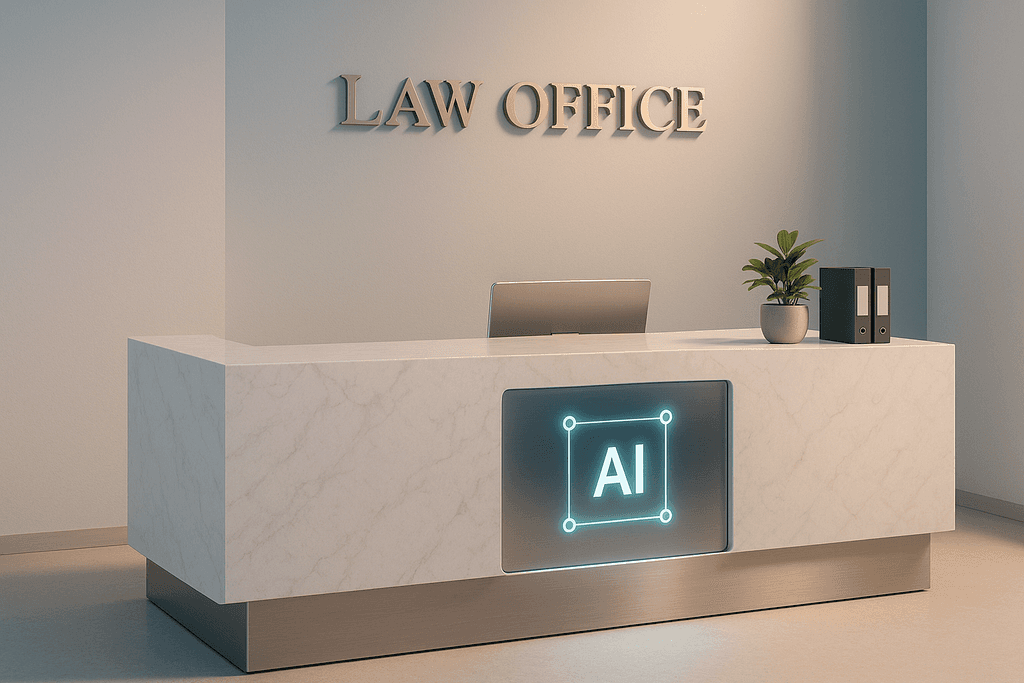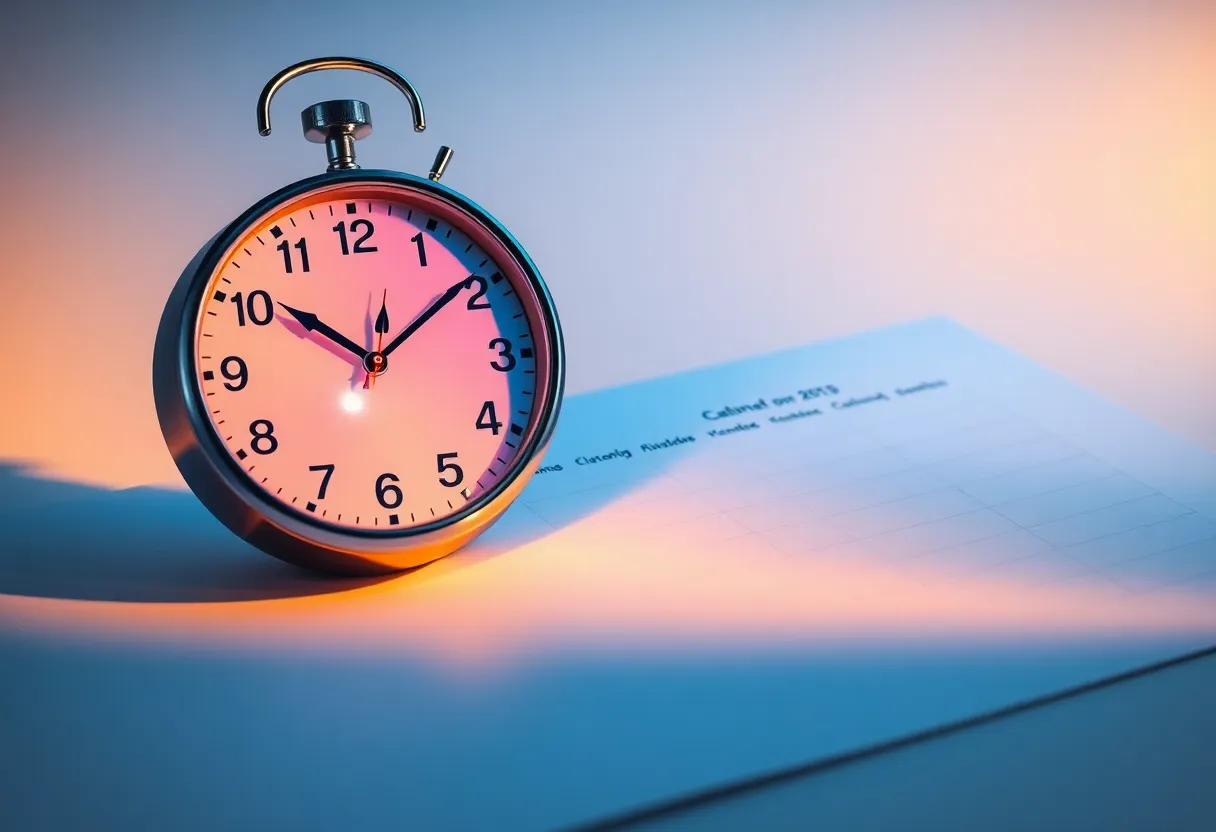Missed calls, delayed replies, and back‑and‑forth scheduling can quietly drain a law firm’s pipeline. AI receptionists fix the bottleneck by answering instantly, qualifying prospects, scheduling consultations, and documenting every interaction—24/7—so attorneys can focus on legal work.
• The 2025 Legal Trends Report shows AI adoption among legal professionals jumped from 19% to 79% in one year; the same release notes many firms still ignore new‑client inquiries, leaving growth on the table (Clio, 2025). See Clio’s 2025 highlights.
Traditional intake problems—and why speed matters
Most firms want to be responsive, but inbox overload, court days, and after‑hours inquiries get in the way. Mystery‑shopper studies of U.S. firms found many offices still miss calls or fail to follow up on voicemails; consumers overwhelmingly expect timely replies. For example, a major industry assessment reported that only 40% of firms replied to email inquiries, 56% answered phone calls, and more than half didn’t return voicemails within 72 hours; most consumers (79%) expected a response within 24 hours (Clio Legal Trends research). Read the findings.
What clients expect now
- Fast acknowledgement (minutes, not days).
- Clarity on next steps and whether your firm handles their matter.
- Easy scheduling without phone tag.
What happens when you wait
“Speed‑to‑lead” research shows response time is decisive. In a seminal analysis published by Harvard Business Review, contacting an online lead within 5 minutes made firms nearly 7× more likely to qualify the opportunity than waiting an hour—and more than 60× versus 24 hours. Harvard Business Review.
What an AI receptionist does for a law firm
Answers and triages 24/7
Greets prospects on your website or phone line, asks targeted questions (matter type, location, timeline), and collects contact info—anytime, including nights and weekends.
Schedules automatically
Shows real‑time availability, books consults, sends confirmations, and issues reminders to reduce no‑shows.
Qualifies and routes
Uses your intake rules (e.g., county, case value, conflicts keywords) to route qualified matters to the right attorney or hand off to a human instantly.
Documents every interaction
Creates transcripts and summaries so your team starts each call or consult prepared.
Tip: Start with your 10 most common new‑matter questions. Program those into your AI receptionist first for quick wins.
Compliance, ethics, and client protection
ABA guidance on lawyers’ use of AI
In July 2024, the American Bar Association issued Formal Opinion 512, reminding firms that Model Rules on competence, confidentiality, communication, supervision, candor, and fees apply to AI use. In practice, that means understanding tool limits, protecting client data, supervising outputs, and being transparent where needed. ABA Formal Opinion 512 (2024).
Phone rules for AI voice agents
- In February 2024, the FCC clarified that the TCPA’s restrictions on “artificial or prerecorded voice” cover AI‑generated human‑sounding voices; such calls require prior express consent from the called party. FCC Declaratory Ruling, Feb 8, 2024.
- Separately, the FTC’s rule targeting impersonation of government and businesses took effect April 1, 2024, strengthening enforcement against impersonation scams (relevant for configuring caller ID and branding). FTC Rule update.
Practical safeguards you should enable:
- Display and state a clear “no legal advice / no attorney‑client relationship formed” disclaimer until a lawyer confirms representation.
- Capture explicit consent before outbound or callback AI voice calls; honor do‑not‑call requests.
- Encrypt transcripts and restrict access; avoid sending sensitive facts to tools that train on prompts by default.
Implementation checklist (with settings that work)
- Map your first‑response path. Define which matters the AI may book directly vs. which to escalate.
- Write your eligibility rules. County/jurisdiction, matter types, minimums, conflicts keywords, languages.
- Load availability. Sync attorney calendars; set buffers and consult lengths per practice area.
- Add intake questions. Name, email, phone, opposing party, jurisdiction, brief facts, urgency.
- Set response SLAs. Aim for sub‑minute web reply and immediate call pickup; use SMS confirmations.
- Route and notify. Send qualified leads to the responsible attorney’s inbox, Slack, or CRM with transcript and next steps.
- Test for tone and accuracy. Review 20+ sample conversations; fine‑tune language and escalation triggers.
Enable: 24/7 coverage, jurisdiction screening, conflicts keyword check, calendar sync, SMS confirmation, transcript email to “[email protected]”.
ROI and metrics you can track
Start with a simple intake funnel model:
- Qualified consults = Inquiries × Contact rate × Qualification rate
- New clients = Qualified consults × Retainer rate
- Added revenue = New clients × Avg. first‑year value
Where does an AI receptionist move the needle?
- Contact rate rises with instant replies (web) and answered calls (phone).
- Qualification rate improves when you ask the right questions the first time.
- Show‑up rate improves with automated reminders and rescheduling.
Benchmark to beat: Responding within 5 minutes dramatically improves lead qualification odds compared with an hour or more (Harvard Business Review). Source.
Why Small Business Chatbot for law firms
Small Business Chatbot is built for small and midsize practices that need reliable, compliant intake—without adding headcount.
- 24/7 answering across web and phone with human‑like responses (sub‑second on voice) and configurable tone.
- Consult scheduling that reads your calendar rules and sends confirmations/reminders.
- Lead capture + transcripts emailed to your team and stored for review.
- Spam filtering and jurisdiction screening so you focus on the right matters.
- Integrations with calendars, forms, and CRMs so conversations become scheduled work. See integrations.
Hear from real customers using our AI assistants to capture more qualified leads: customer reviews.
Frequently asked questions for law firm AI receptionists
1) Will an AI receptionist replace my staff?
No. It handles first‑response tasks—answering, screening, scheduling—so your team spends time on higher‑value conversations and active matters.
2) Is it ethical to use AI for intake?
Yes, with the right safeguards. The ABA’s 2024 Formal Opinion 512 reiterates duties of competence, confidentiality, communication, and supervision for AI use. Configure disclaimers, supervise outputs, and protect client information. ABA guidance.
3) Can an AI voice agent call people back?
Only with consent. The FCC clarified that AI‑generated voices used on calls fall under the TCPA’s “artificial or prerecorded voice” rules, which require prior express consent. FCC ruling.
4) How do we avoid forming an attorney‑client relationship too early?
Use clear disclaimers, limit the AI to general information, and route sensitive or case‑specific guidance to a lawyer. Only confirm representation after attorney review and conflicts checks.
5) Can it handle different practice areas?
Yes. Create separate flows (e.g., PI, family, criminal, business) with customized questions and routing rules.
6) What measurable results should we expect?
Most firms aim for faster first response, higher contact and consult‑set rates, lower no‑shows, and complete transcripts for better prep. Use the funnel metrics above to quantify gains.
7) How do we train it on our firm’s voice?
Provide example answers, approved phrases, and escalation criteria. Review early transcripts weekly and refine.



